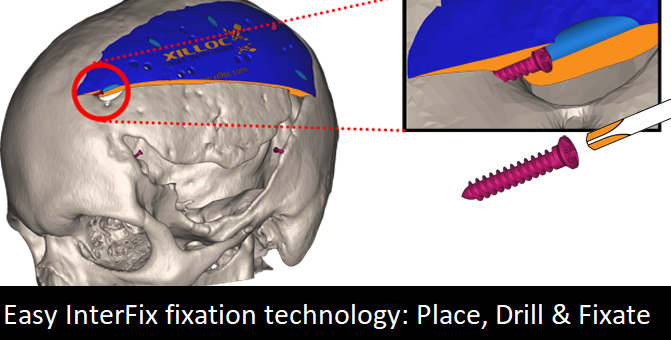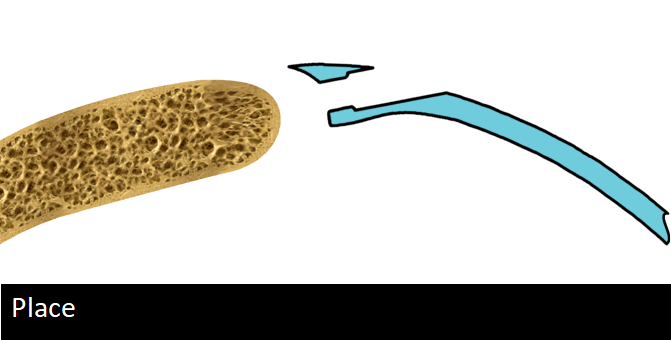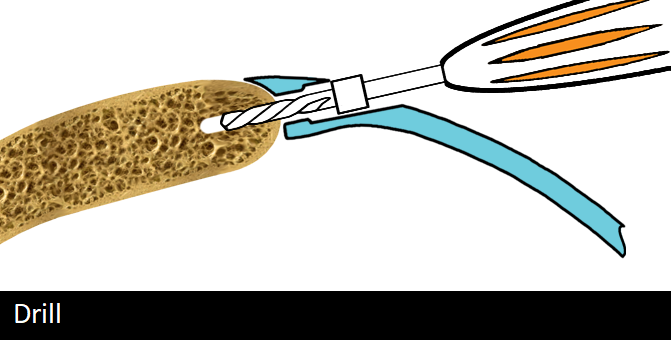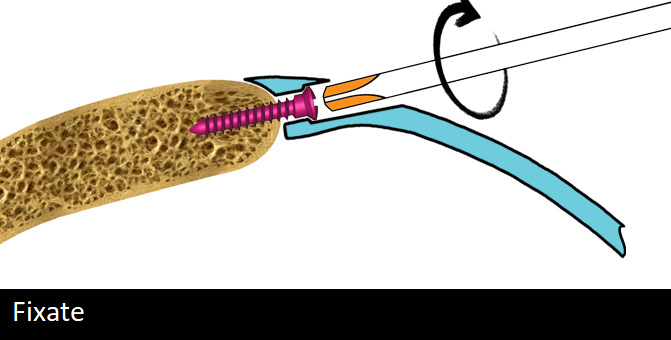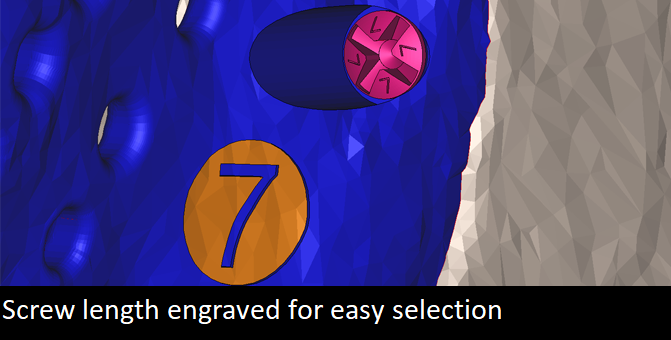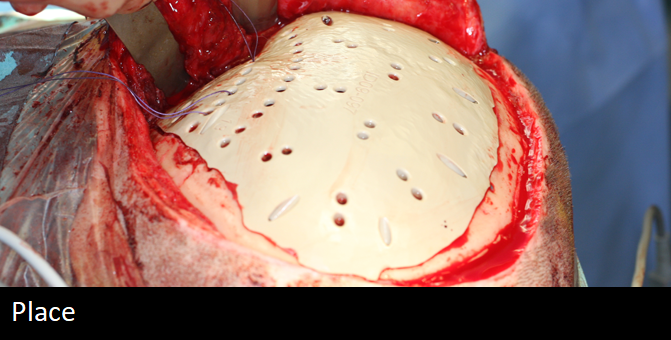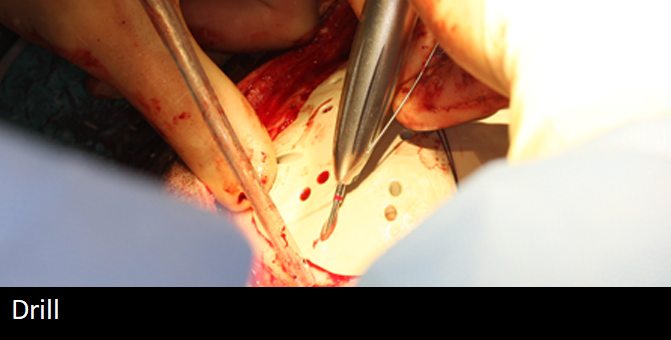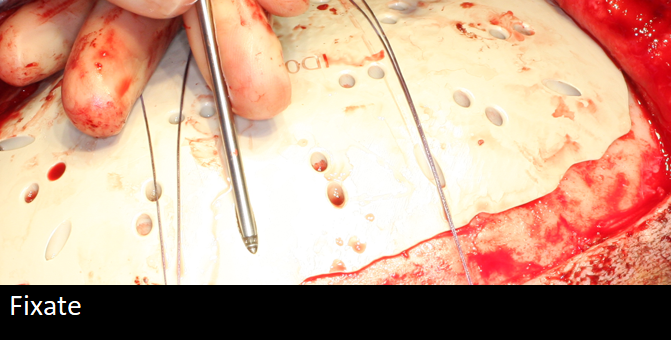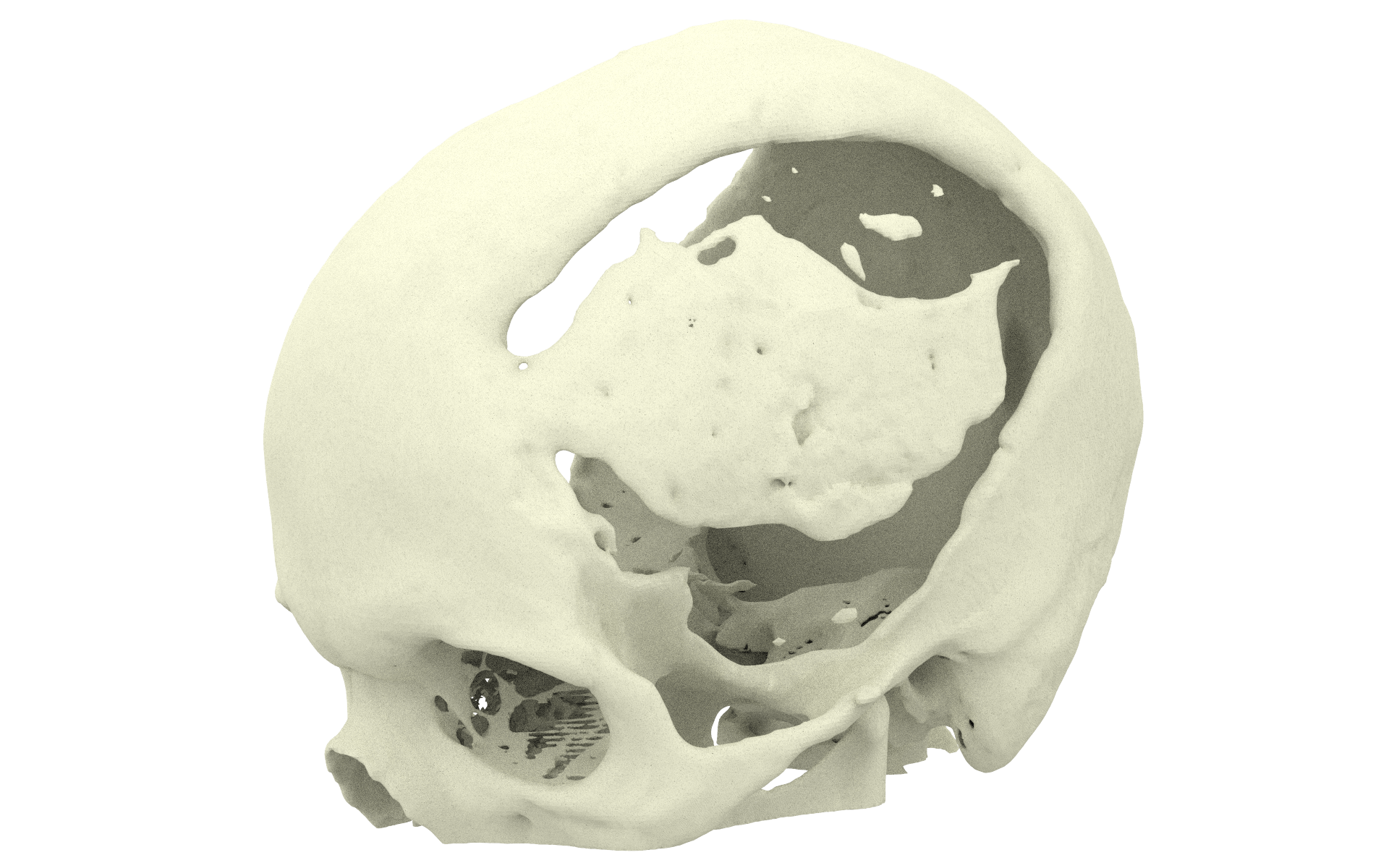

Cranial Implants 3D printed Titanium
Titanium is often used for cranial reconstruction of large cranial defects with a patient-specific onlay implant.
Contrary to a titanium mesh that needs to be bent and cut interoperatively (and never achieves perfect cosmetics), our cranial implants are 3D printed in titanium to fit the patient perfectly. The advantages of 3D printed titanium are:
- High strength, so the implant can be made very thin
- Excellent biocompatibility and suspected antibacterial properties
- Onlay implant to leave room below the implant for residual brain swelling
- Autoclave (steam) sterilisation and re-sterilisation
Indications
- Calvarial reconstructions after decompressive craniectomy; tumour or aneurysm surgery
- Resorption of autologous bone graft
- Cranial reconstruction in patients with an increased risk for bone resorption
- Cranial reconstruction in patients with residual brain swelling
- Failure of PMMA cranioplasty
- Suspected polymer allergy


Innovative InterFix technology: Place, Drill & Fixate
Our patented tangential fixation technology InterFix eliminates the need for additional plating and fixation systems and offers a fixation mechanism that is not palpable by the patient.
- the ideal screw locations, directions and screw lengths are pre-planned, based on the shape and thickness of the patient’s bone.
- the screws are directed tangentially into the bone. Therefore, the fixation is completely impalpable.
- only few screws are required (on average only 5-9 screws for a large calvarial implant). No plates needed.
During surgery, the implant is placed into the defect, holes are pre-drilled into the cortical bone and a screw is positioned into each hole. Advice on maximum screw length may be engraved next to the fixation holes.
Lattice
Solid titanium implants are known to cause headaches in patients when it’s very hot or cold outside, because the metal is a very good thermal conductor. To avoid this effect, we simply remove the majority of the metal; we apply a mesmerizing lattice to our 3D printed implants. Don’t worry, we make sure the implant is still strong enough!
Furthermore the lattice can be used for dura and musculus temporalis suspension.



















